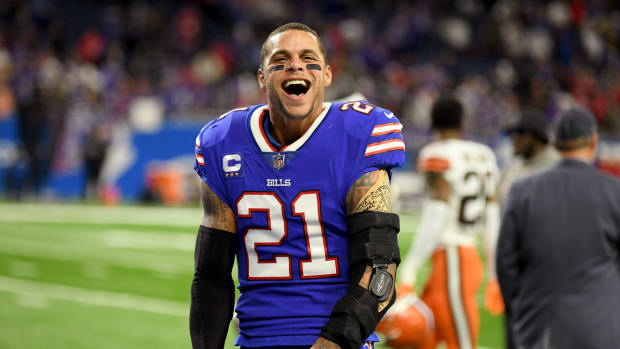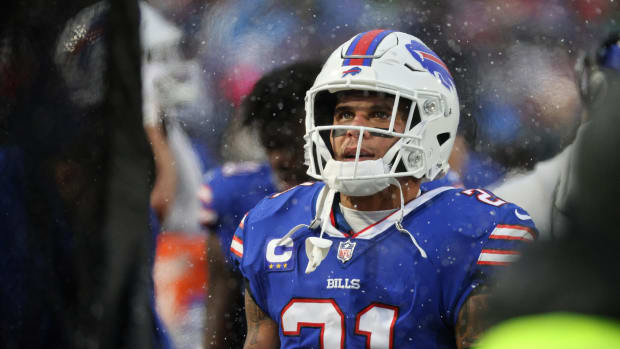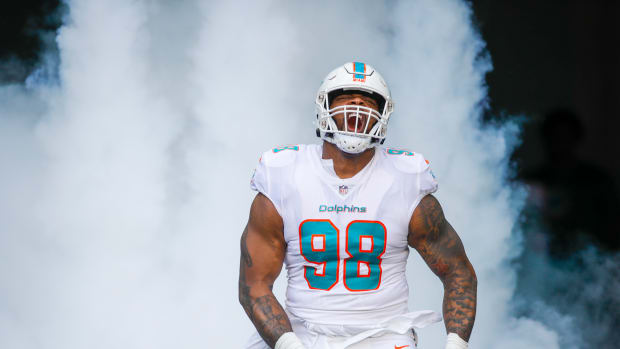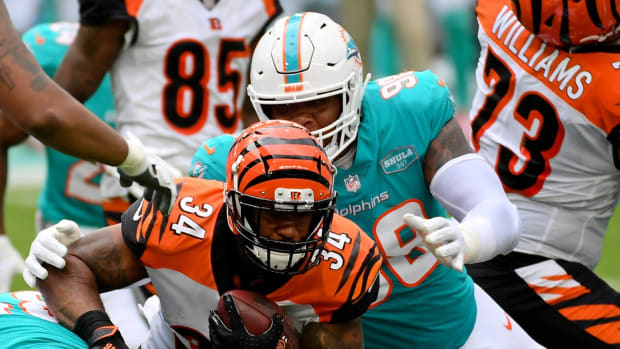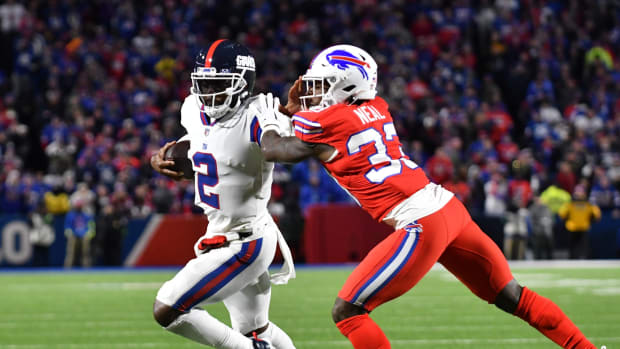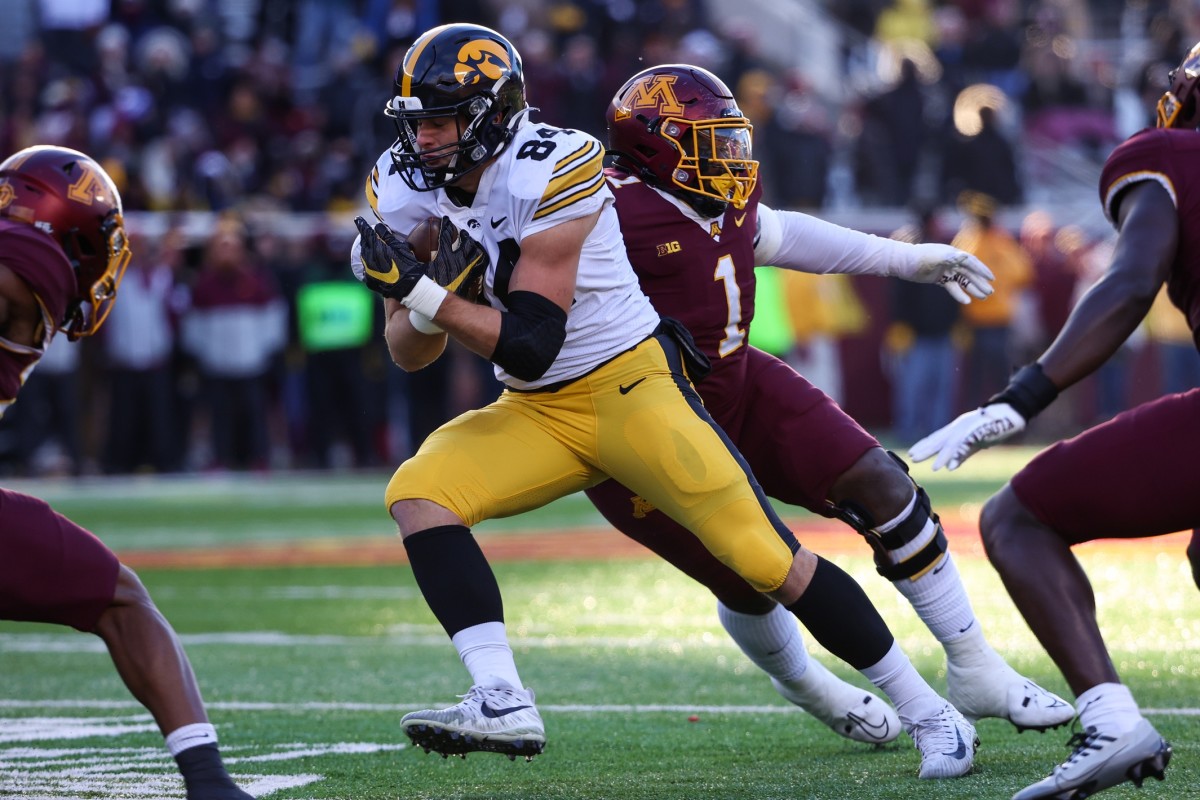
Day 2 Draft Targets for the Miami Dolphins
The Miami Dolphins should be feeling pretty comfortable, and confident the team’s decision-makers can find a draftee who can immediately help the team on the second day of the 2023 NFL draft.
The first round could have been kinder to the Dolphins had fewer offensive tackles had been taken, but South Florida’s NFL franchise likely will have plenty of the draft’s top 50 talents from which to choose when they got on the clock with pick No. 51.
Two quarterbacks—- Kentucky’s Will Levis and Tennessee’s Hendon Hooker —could be targeted by quarterback-needy teams.
A handful of cornerbacks with first-round grades are still on the board, and no safety has been taken yet.
There are a couple of decent offensive linemen and defensive linemen still available.
And the run most draft analysts expected at tight end, which was supposed to be the deepest position group in this draft, hasn’t even started. Only Utah’s Dalton Kincaid was taken in the first round, which could leave six of the seven upper-echelon tight ends for teams like Miami to select on the second day.
Here’s a look at the prospects available on the second day who fit Miami’s needs.
TIGHT END
Notre Dame TE Michael Mayer: Mayer is above average at every aspect of the job, but not sensational at anything. Still, he set Notre Dame records for tight ends in single-season receptions and receiving yards in 2021, and is the school’s all-time leader in all three categories for the position.
Georgia TE Darnell Washington: It’s easy to mistake Washington for an offensive tackle because of his 6-7, 270-pound frame. He has the ability to maul linebackers, safeties and cornerbacks in the blocking game, which could be intriguing, especially for offenses that play laterally like the Dolphins. While he ran an impressive 4.64 time in the 40-yard dash, his film shows he’s a slow-twitch athlete, which means his upside as a pass catcher could be limited.
Oregon State TE Luke Musgrave: Musgrave’s athleticism and size (6-6, 250) might warrant a top 50 selection, but injury concerns (a knee injury prematurely ended his season in 2022) likely led to him sliding to the second day. His catch radius is enormous and the Dolphins would benefit from adding a playmaker who can high-point the ball now that Mike Gesicki is gone.
Iowa TE Sam LaPorta: LaPorta is an impressive athlete who put up major statistics (153 catches for 1,786 yards and five touchdowns) in his four seasons at Iowa, a tight-end-friendly program. While he was inconsistent as a run blocker, there’s potential for him to improve in that area with good coaching. He’d be a perfect complement for Durham Smythe if he falls to Miami range in the second round.
DEFENSIVE LINE
Wisconsin DT Keeanu Benton: While Benton lacks the anchoring ability to play nose tackle in a 3-4 scheme, this four-year starter for the Badgers has the toughness and technique to fit a 3-4 and 4-3 scheme. His average speed and limited pass-rush skills make the third round his ceiling.
Baylor DT Siaki Ika: Ika, who easily clears 350 pounds, has a rare first step for a man his size. He can walk interior linemen back and collapse the pocket. Problem is, his size and conditioning hint he might only be good for 20 snaps a game. His skill set is somewhat limited because his pass rush stalls if his initial move doesn’t work. He’d immediately challenge Raekwon Davis for playing time, and could be his replacement in 2024.
USC DE Tuli Tuipulotu: His lightning-quick hand use will lead to a dozen wins per game in the NFL. Last season he racked up 56 pressures in 733 snaps for the Trojans. However, his tall, linear build, and the tightness throughout his lower body might keep him from being a top 50 selection. With every Dolphins defensive lineman either becoming a free agent at the end of the 2023 season or a potential cap casualty, the team needs to begin the restocking process, and Tuipulotu could be a building block.
Michigan DE Mike Morris: Morris has good size (6-5, 275 pounds) and has the traits that make him work well in a 4-3 and 3-4 scheme. He’s a violent tackler who has good eyes and awareness. He was a late bloomer in college and didn’t test well, which likely pushed him to the second day of the draft. But he has the talent to become an NFL starter in a year or two.
OFFENSIVE LINE
Ohio State OT Dawand Jones: Jones is a (6-8, 374 pounds) mountain of a tackle, a blocker who is difficult for any pass rusher to bull-rush. The biggest concern is whether he has the athleticism and stamina to excel in a zone- blocking scheme. There are some concerns about his work ethic, so Jones might be selected later than his talent warrants. His big frame would secure Tua Tagovailoa’s blind side.
North Dakota State OT Cody Mauch: Mauch was a three-year starter at left tackle, but he could move inside in the NFL because of his rugged style and aggressive demeanor, which is more suited for guard. He’s a smooth second-level blocker who uses his hands and feet well. The biggest concern is his ability to get depth on pass sets, which hints he might not be a day one starter.
BYU OT Blake Freeland: Freeland is a brick wall when it comes to pass protection, and his 35-inch arms have plenty to do with how well he plays in that phase of the game. His motor and natural power make him an asset in the run game. Problem is he’s a heavy plodder who doesn’t change direction easily.
Wisconsin C Joe Tippmann: He’s taller and leaner (6-6, 313) than most centers, but has top-shelf athleticism, which allows him to fire out of his stance on run plays. He’s fluid in his movement, able to climb up the second level and cut down defenders, which makes him a perfect fit for a zone-blocking scheme like Miami runs.
Minnesota C John Michael Schmitz: Schmitz is a consistent zone-scheme center with decent size (6-4, 315) and solid play strength. He’s got excellent awareness and is quick to adjust to stunts and blitzes. He has the versatility to take snaps as an offensive guard, but his best position is center. With Connor Williams’ contract expiring after the season, Miami would be wise to start planning for the future.
TCU IOL Ateve Avila: Avila bounced around between multiple positions early in his career before settling in at center in 2021 and then moving over to left guard in 2022. He has the power to open up running lanes, but the extra weight he’s carrying (332 pounds) has to concern teams. He rarely gets outmuscled, which hints that he could potentially beat out Liam Eichenberg for the starting left guard spot.
SECONDARY
Penn State CB Joey Porter Jr.: The son of the former NFL Pro Bowl pass rusher with the same name slid out of the first round for unknown reasons. Some team will be intrigued by his frame, ball skills and experience.
Alabama S Brian Branch: It’s hard to knock an Alabama defensive back because of how polished they are coming out of college. Branch has excellent burst to close on the ball and is a skilled zone defender, which makes him a good fit for Vic Fangio’s scheme.
Alabama S Jordan Battle: Battle is a reliable defender who is almost always in the right place at the right time. He likely won’t be a high-end producer, but he could end up being a starter for the next decade. Finding a replacement for Brandon Jones, who is a free agent after this season, should be a top priority.
Texas A&M S Antonio Johnson: Johnson is a member of the all-looks team. His blend of size and strength will get him drafted early. But it’s his versatility, his ability to work as a nickel cornerback and be an in-the-box defender, that makes him the perfect complement for Jevon Holland.
Georgia CB Kelee Ringo: Ringo has a rare blend of size and speed, which means he’ll be selected higher than his film says he should. But he’s a physical player in coverage and in run support, which means he’ll fit into Miami’s defense well if the team is sticking to its board, and selects a player at one of the team’s deepest positions.
QUARTERBACK
Tennessee QB Hendon Hooker: If a torn ACL hadn't ended his senior year prematurely, Hooker probably would have been a first-round selection, and maybe the first quarterback drafted because of his accuracy and dual-threat ability. But he's approaching 26 at the start of his rookie year, which is another reason he's slid into the second round. Miami needs to consider taking him if he's there at 51 because Tua Tagovailoa's health can't be guaranteed, and Hooker could become this generation's version of Kirk Cousins, the quarterback who thrived after Robert Griffin III got hurt.


